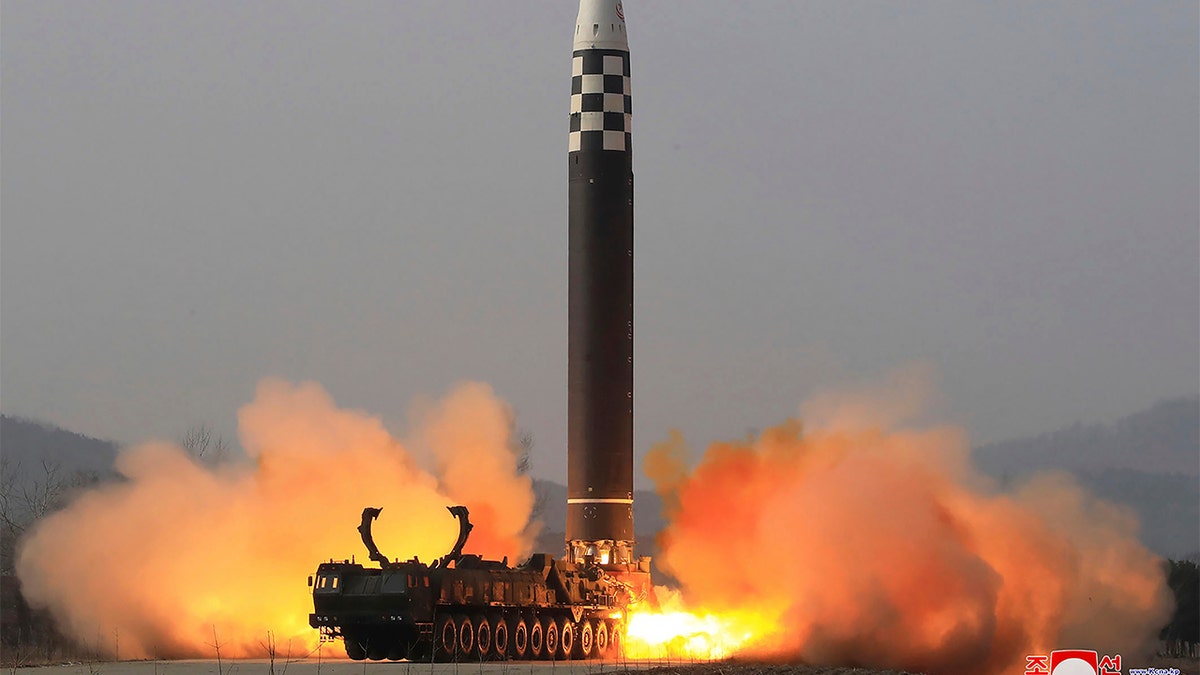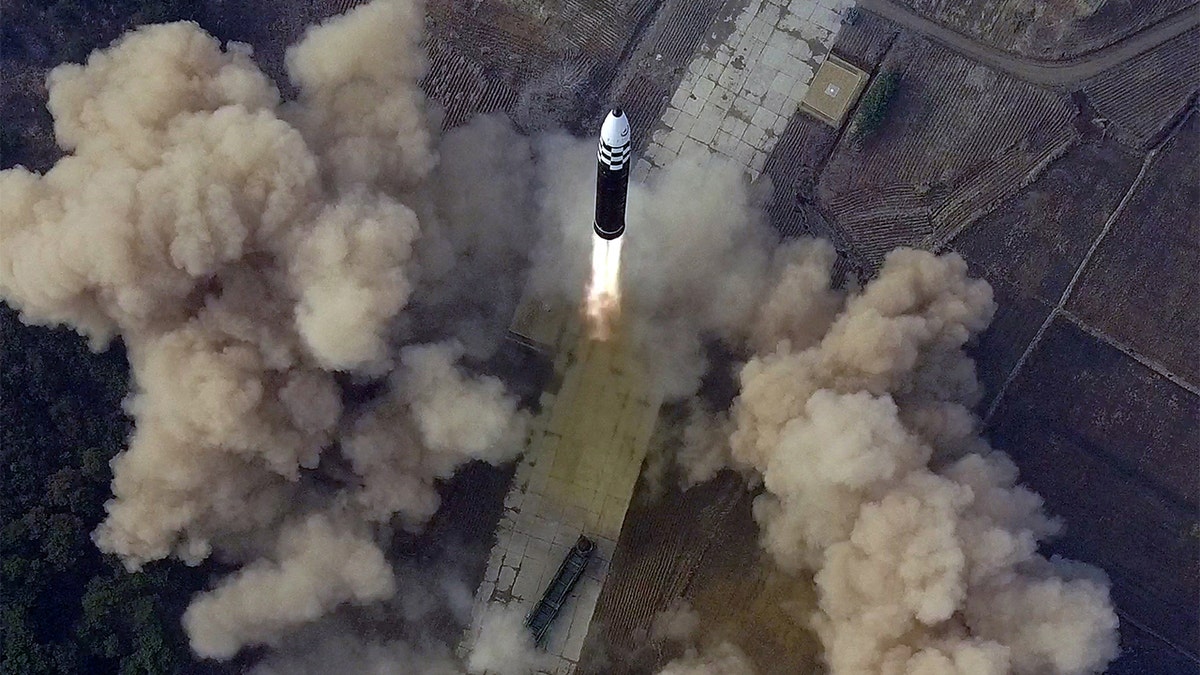Gen. Jack Keane on North Korea's motivations behind missile launches
Fox News senior strategic analyst Gen. Jack Keane weighs in after North Korea missile launches trigger evacuation alerts in Japan on 'Your World.'
North Korea test-launched an intercontinental ballistic missile (ICBM) capable of carrying a nuclear warhead with a range that could strike anywhere across the U.S.'s mainland, defense officials said Friday.
The missile landed 130 miles off the coast of Japan, and the U.S. Indo-Pacific Command said it was in close communication with Japanese and South Korean officials.
The U.S. command immediately condemned Pyongyang’s missile launched and called on it to "refrain from any further unlawful and destabilizing acts."
NORTH KOREA FIRED BALLISTIC MISSILE THAT LANDED NEAR SOUTH KOREA: SEOUL

This photo distributed by the North Korean government shows what it says is a test-fire of a Hwasong-17 intercontinental ballistic missile at an undisclosed location in North Korea on March 24, 2022. (Korean Central News Agency/Korea News Service via AP, File)
Defense officials said they did not assess the missile test was an immediate threat to the U.S. or its allies but said it would continue to "monitor the situation."
"U.S. commitments to the defense of the ROK [Republic of Korea] and Japan remain ironclad," the Indo-Pacific Command said in a statement early Friday morning.
North Korea has launched a series of missile tests in recent weeks as it looks to bolster its nuclear program and position itself as a greater threat to top nations like the U.S.
Pyongyang’s attempts to bolster its geopolitical standing coincided with China and Russia’s decision earlier this year to strike down Western attempts to increase U.N. sanctions on North Korea to curb its nuclear development.
Japanese Prime Minister Fumio Kishida condemned the launch as "utterly unacceptable" and said the missile fell within Japan’s exclusive economic zone.
Japan’s Defense Minister Yasukazu Hamada estimated that the missile had a potential range of over 9,300 mile depending on the weight of the warhead.

An overview of what state media reports is the launch of the Hwasong-17 intercontinental ballistic missile in this undated photo released on March 25, 2022. (North Korea's Korean Central News Agency via REUTERS)
NORTH KOREA LAUNCHED BALLISTIC MISSILE TOWARD EASTERN SEA, SOUTH SAYS
"In which case it could cover the entire mainland United States," he warned.
U.S. National Security Council spokesperson Adrienne Watson said the launch "needlessly raises tensions" and showed that North Korea prioritized military gains over diplomacy.
"Pyongyang must immediately cease its destabilizing actions and instead choose diplomatic engagement," she added.
South Korea’s military launched F-35 warplanes on Friday to conduct drills that simulated aerial strikes on North Korean missile launchers.
Another group of eight U.S. and South Korean jets separately performed other aerial drills off of the peninsula’s east coast.

More than 230 aircraft participated in the five-day massive military drills. (South Korea Defense Ministry via AP)
CLICK HERE TO GET THE FOX NEWS APP
South Korea's Joint Chiefs of Staff said the exercises "showed we have a strong resolve to sternly deal with an ICBM launch and any other provocations and threats posed by North Korea."
Adding that allied nations have an "overwhelming capacity and readiness to launch precision strikes on the enemy."
The Associated Press contributed to this report.


